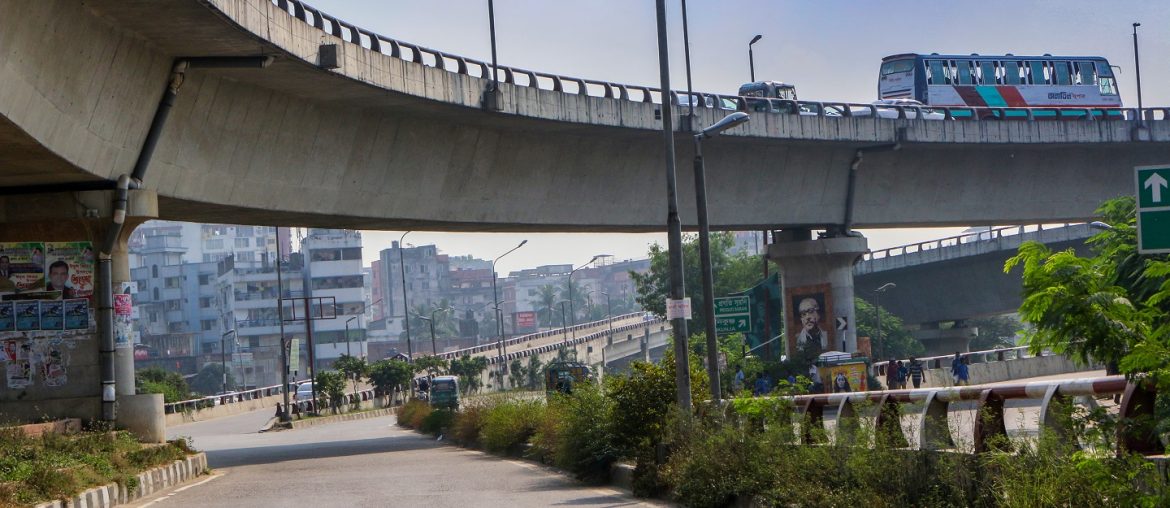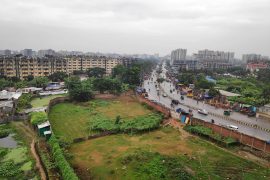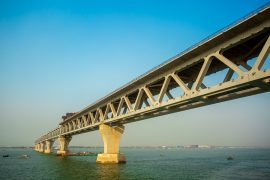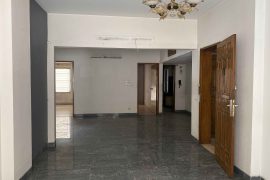Overpopulation and its consequential problems have been crippling the bustling metropolis of Bangladesh for more than 40 years now. Soon after the independence when the population boom happened, Dhaka took the most hit. Its population tripled within decades. As a result, a multitude of new problems surfaced. The unemployment rate went off the chart, environmental pollution was at an all-time high, and people were dying from hunger and diseases more than ever. Fast forward to the 21st century, while almost all these issues were somewhat tackled by governments’ careful, smart, and strategic planning, it was the horrible traffic condition that was giving city dwellers a nightmare every day. To mitigate this nagging traffic condition, over the past 15 years, the government has built 7 flyovers in Dhaka.
In the following, we will discuss them in detail from their basic overview to their impact on the present traffic condition.
Mohakhali Flyover
This was the first flyover ever to be introduced in Bangladesh. It was opened to traffic in 2004. Built on the most traffic-prone areas in Dhaka, the main purpose of this flyover was to direct the traffic to some of the most important areas of the city including the international airport, Gulshan and Banani. It significantly reduced the traffic congestion and made it easier for people who want to reach other parts of Dhaka bypassing Mohakhali traffic.
The flyover has a total length of 1.12km, with a total of 19 pre-stressed box girder span segments. It features a 7.5m wide two-lane carriageway, with 0.6m footpath on either side. There are ramps on both sides supported and constructed on anchored retaining wall foundations.
Khilgaon Flyover
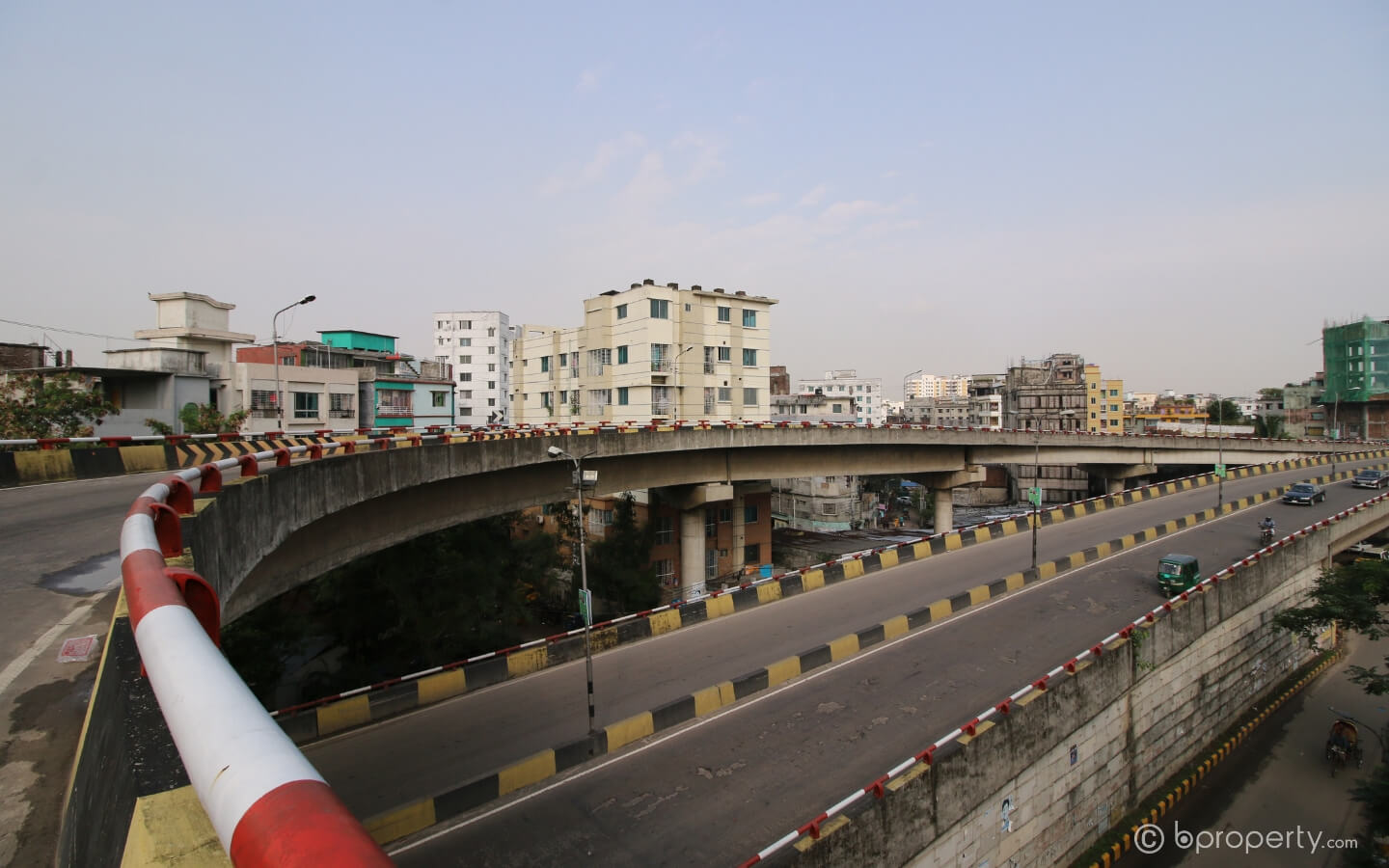
On June 2, 2001, then Prime Minister Sheikh Hasina laid the foundation stone of the first-ever fly-over of the country. But the construction was completed in 2005, making it the second flyover in Dhaka.
The total length of the fly-over is 1,899km and its width is 14m. The length of the main bridge is 788m. Of this, the length of the Rajarbagh section is 222m, Malibagh 202m, and Sayedabad 220m.
This flyover facilitated the transportation between the commercial area of Sabujbagh, Madartek, Kadamtali, Basabo, Rajarbagh, Sipahibagh, Meradia, Goran of DNSC. In effect, it improved the traffic condition of the city.
Kuril Flyover
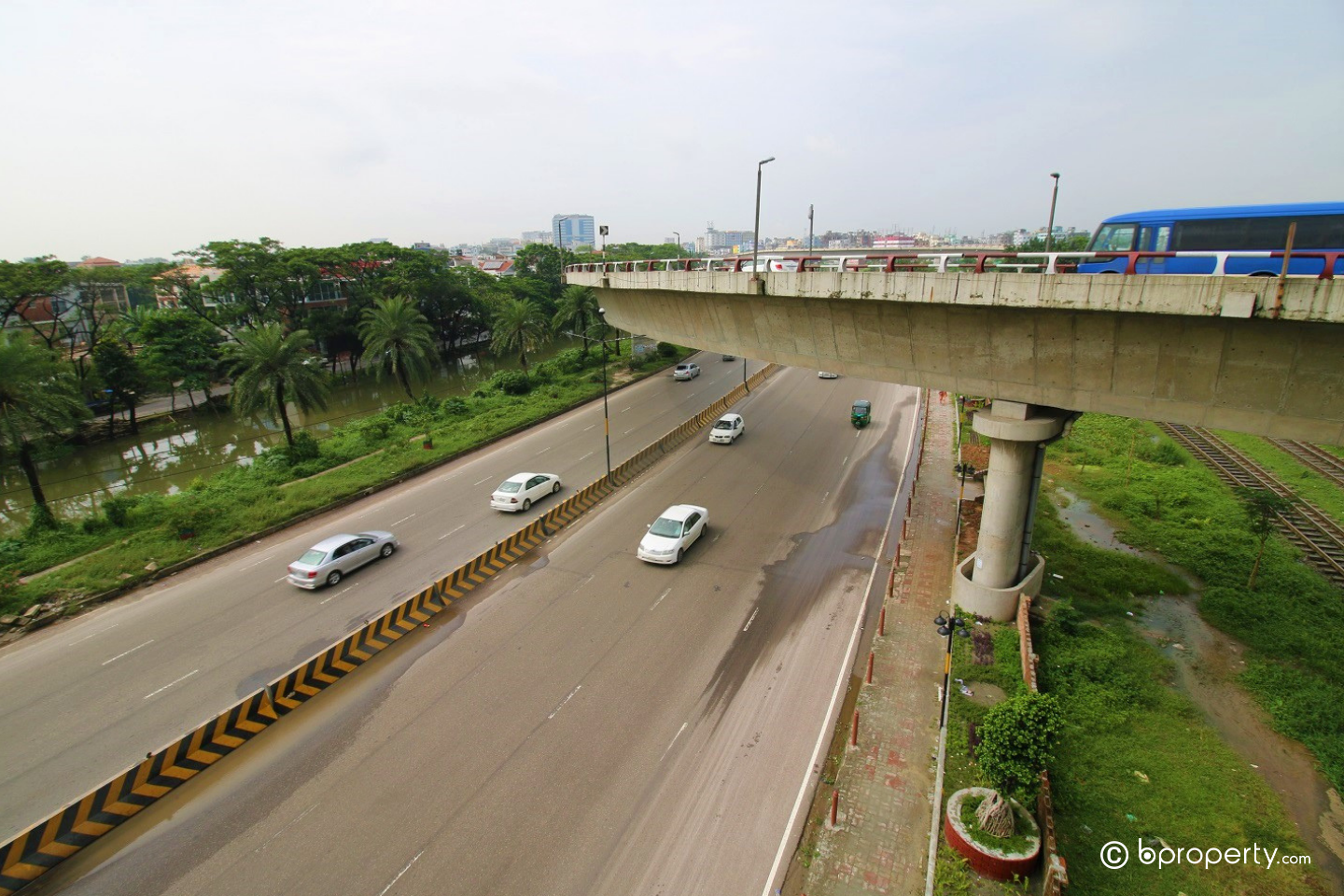
When opened to traffic on August 4, 2013, Kuril flyover reduced the traffic flow in the area to zero, where 87 trains are crossing the Pragati Sarani level crossing every day, halting traffic for about seven hours.
Built on 12.7 acres of land, the 3.1km long and 14.6m high flyover has four loops (two ‘Y’ and two ‘U’). Commuters coming from the west of the capital uses loop-1 to go to Pragati Sarani and Purbachal. Commuters from Pragati Sarani and adjoining areas use loop-2 on their way to Nikunja.
Two more loops are used by the passengers from Banani and the west side of the Airport Road to go to Pragati Sarani. Commuters from Purbachal also use these loops on their way to Banani.
Mirpur Airport-Road Flyover
Before the construction of this flyover, the people of Mirpur used to push through the horrible traffic of Mohakhali and Banani to get to the airport and the north part of the city. But when completed on 27th March 2013, it cut the distance to 3km in getting to the airport in 20 min, avoiding an 8km detour through Bijoy Sarani.
It also benefited Gulshan-Banani residents traveling to Mirpur. Commuters from Banani and Gulshan are not able to go to Mirpur by taking the link bridge on the west of the Banani overpass. It also makes it easier for the passengers from the airport who are willing to go to Mirpur or Pallabi.
The 1.8km flyover, which extends from Matikata to Airport Road at Zia Colony, is also aimed at easing up traffic movement between Mirpur, Shahjalal International Airport, Uttara, Banani, Gulshan, and Mohakhali areas.
Mayor Hanif Flyover
This much-awaited 10-kilometer-long Jatrabari flyover opened for the public in October 2013. The 5.5-km long main flyover stretches from Dhaka-Chittagong highway (Kutubkhali) to Nimtoli through Jatrabari, Sayedabad, Kaptanbazar, and Gulistan, making it the longest flyover in Dhaka.
Named after former Dhaka city mayor Mohammad Hanif, this flyover has made the road connectivity between 32 southeastern districts and the capital faster and easier. It has also helped ease the perennial traffic gridlock in Saydabad, Jatrabari, Tikatuli, Gulistan, and Fulbaria areas. It was the country’s first-ever Public-Private Partnership scheme and the commuters are required to pay certain tolls for their vehicles.
Moghbazar-Mouchak Flyover
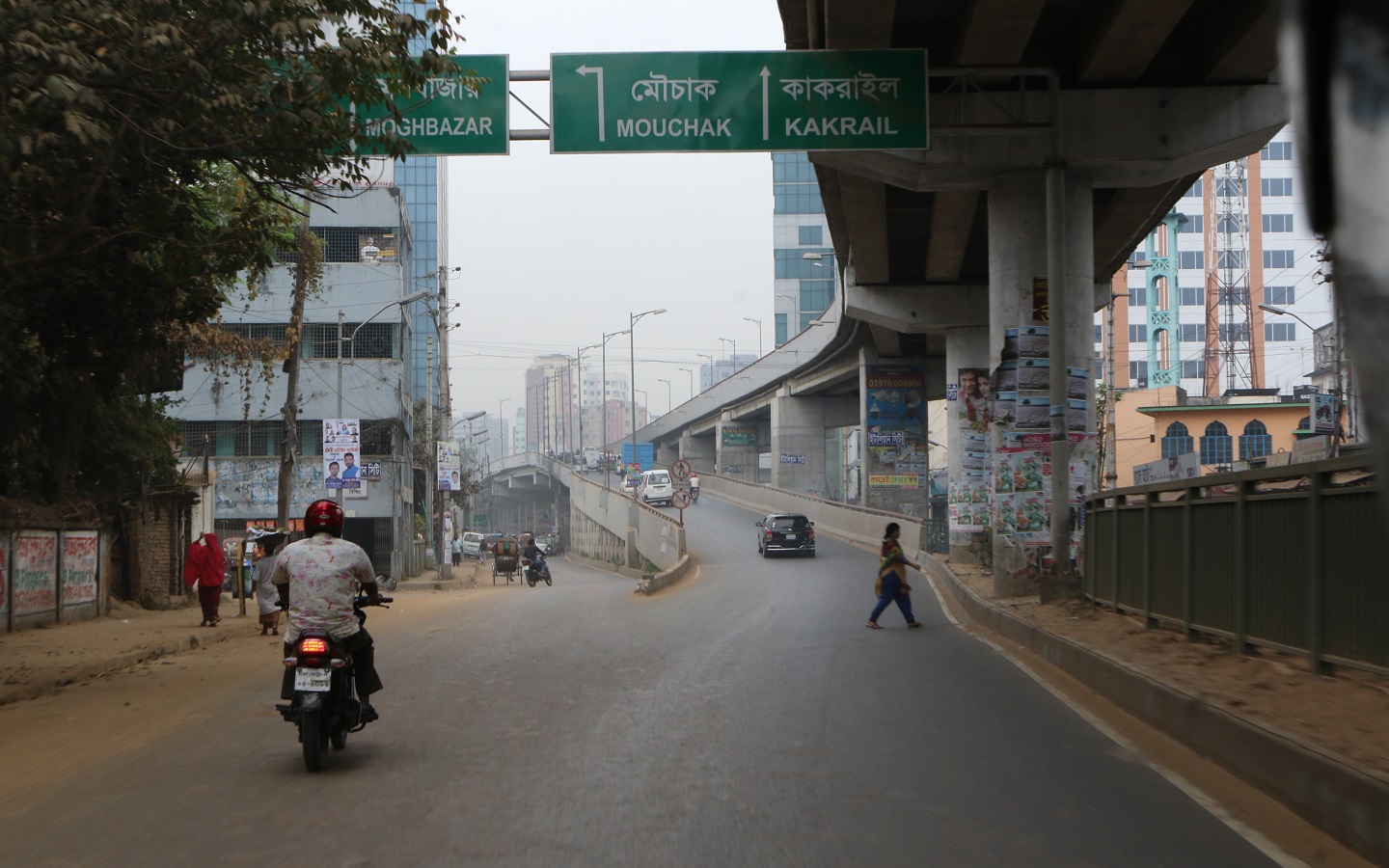
It took six years to fully construct the flyover. But after the construction, when it was opened to traffic on 30 March 2016, it appeared that the flyover had a major design flaw. It remained closed for another year and finally fully opened to traffic on 26 October 2017.
The 8.7km flyover has loops and onramps connecting several important Dhaka thoroughfares Tejgaon Satrasta, Sonargaon Hotel, Moghbazar, Ramna, Bangla Motor, Malibagh, Rajarbagh Police Lines, and Shantinagar. That in effect has significantly reduced the traffic in these areas.
Bijoy Sarani-Tejgaon Link Road Flyover
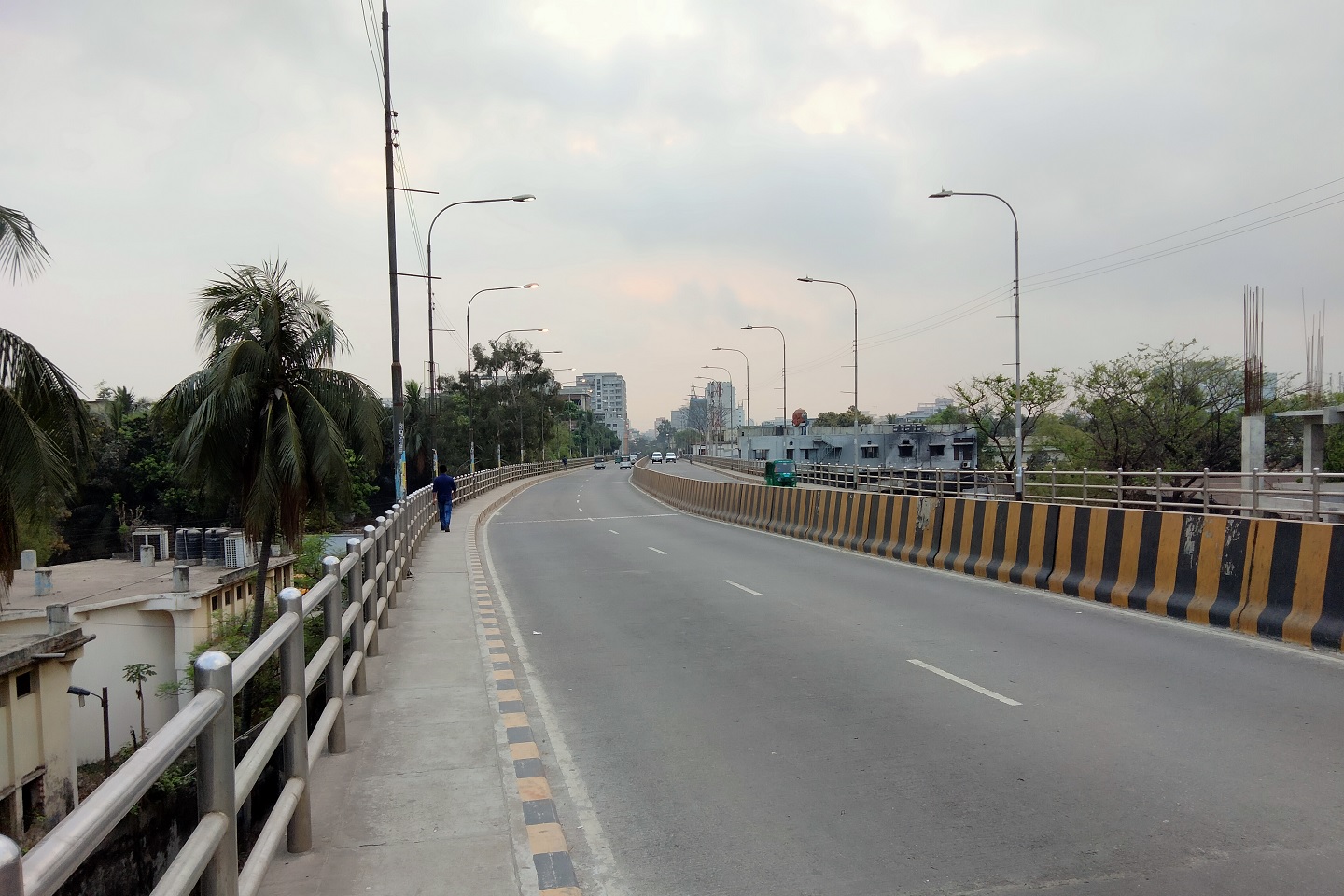
With 1,114m in length and 60ft in width, this is one of the smallest flyovers in Dhaka. As the name suggests, this is a link road that connects Bijoy Sarani to Tejgaon but technically this is a flyover. Before this, people had to push through the exhausting traffic of Mahakhali or Karwan Bazar to reach Tejgaon industrial area.
While flyovers have made the overall traffic condition much smoother, it is still not enough. With the increasing population, it is becoming harder to control the traffic overflow in different parts of the city. So it is now time for another remodeling to improve the condition even further.

